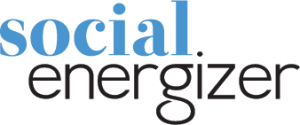Inbound Marketing
Your Website is Your Base Camp, Is It Solid?
Whether you’re climbing Mt. Everest in the heart of the Himalayas, like adventurers Rhys & Nicky, or leading your company into the world of inbound marketing, your success depends on having a solid base camp. Your website is your base camp. A Base You Can Rely On First off, your website is the most important…
Read MoreTop Five SXSW 2011 Videos
SXSW 2011 has wound down for this year, but they’ll be back next year and I plan to be there. SXSW has something for everyone, especially in social media or inbound marketing. So many of the heavy hitters are there that it makes ones head spin. It has taken a bit of searching around, but…
Read MoreTwitter – The art of tweets, follows and hashtags
If social media were a three legged stool, then a business website, Facebook site and Twitter account would be the legs of that stool. For businesses wanting to master the art of social media marketing, these sites must be professional looking, elegantly managed creating a seamless brand appearance. They also need to be balanced and…
Read MoreRight-Sizing Innovation for the Small Business Owner
Increasingly our world favors BIG. BIG Companies. BIG Stars. The next BIG thing. Big business seems to favor other BIG businesses, like during Christmas when ABC’s GMA seemingly supported only the online BIG Box stores, leaving small online entrepreneurs in the dust as reported in our December 8th blog, “Scrooge Strikes e-Commerce Small Business.” What…
Read MoreDon’t Give People What They Want
I came across a great quote today while reading “Blue Ocean Strategy: How to Create Uncontested Market Space and Make the Competition Irrelevant” by W. Chan Kim and Renee Mauborgne (Harvard Business Review Press, 2005). Samuel “Roxy” Rothapfel, previously a nickelodeon owner, started up Palace Theaters. By using the low-cost, lower-quality nickelodeon style of entertainment,…
Read MoreTop Three Trends Likely to Upset Your Social Media World
What trends will arise, perhaps even merge, and continue to change and then further impact our lives?
Read MoreRule 1 for Social Media Measurement
If you’re going to participate, you must measure! That is the first rule in social media measurement otherwise known as web analytics. Your website is your basecamp and that is where most people start and end with social media measurement. It’s simply not enough. One of the strengths of social media is that it is…
Read MoreHow Small Businesses Get the Most from Social Media
Just how are small businesses using social media? What level of online presence should you have? One way to start is to review what other small business owners are doing and model it after them. Once again our friends at Mashable! have provided some insights in their latest Infographics report. In a nutshell, here’s what…
Read MoreSEO Basics: Get the Most from Keywords
Why do you need Keywords? They lay the foundation for Search Engine Optimization (SEO). And SEO is how you get visitors to your site. It lets people know you exist. Keywords are used by search engines to find a product or service like yours and match it to the customer looking for that. Close your…
Read MoreSEO Explained through Analogies
SEO (Search Engine Optimization) can be daunting stuff. It’s the sort of topic that makes one’s eyes glass over and can put the worst insomniacs to sleep. BUT it is one of the four most important elements to Inbound Marketing and is often not understood. Many consider it the magic behind the curtain. It is…
Read More
